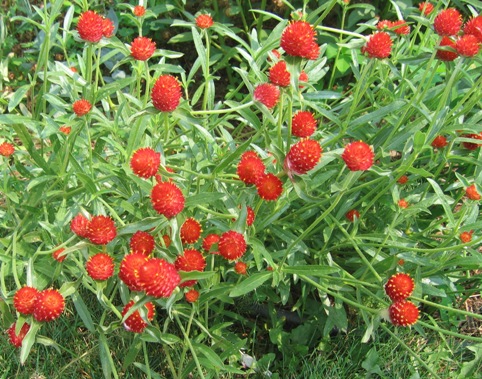 Odds are most supermarket strawberries come from California - that's where 90 percent of the berries are produced. And if the strawberries are not organic, they were likely grown in fumigated soil, which is creating a stir between scientists and regulators in California.
Odds are most supermarket strawberries come from California - that's where 90 percent of the berries are produced. And if the strawberries are not organic, they were likely grown in fumigated soil, which is creating a stir between scientists and regulators in California.The two groups recently faced off over the expected approval of a potentially dangerous pesticide. Currently, farmers use a fumigant called methyl bromide. But it is being phased out internationally because it damages the ozone layer. And the leading alternative "methyl iodide" has its own set of problems.
This is very likely 'because of its chemical structure' to be highly toxic, says John Froines, a chemist and professor of environmental health sciences at UCLA. "It is very worrisome, even frightening, to a chemist. And therefore it should be to the public as well." Frightening because animal studies show that methyl iodide is a carcinogen and a neurotoxin, and it can cause miscarriages.
Is anyone thinking of the 'law of unintended consequences?' In a bid to appease 'greenies' we're putting our children and ourselves on the sacrificial alter of big government.
Click here for more information >>>http://healthfreedoms.org/controversial-pesticide-worries-scientists/
California pesticide regulators plan to approve a new agricultural chemical called methyl iodide for the state's coastal strawberry fields, allowing levels of exposure that the state's own experts say will put farmworkers and bystanders at risk.
The Department of Pesticide Regulation has set acceptable exposure levels for methyl iodide that are 120 times higher than recommended by its own scientists and an eight-person panel the department commissioned to peer-review its work.
The decision to increase exposure levels has caused a rift within the DPR, a little-known but powerful agency that oversees a major segment of the state's multibillion-dollar farming industry. In interviews, all eight peer-review scientists said their warnings and scientific analysis of the health risks of methyl iodide appear to have been disregarded.
"I've never seen anything like this," said Ron Melnick, a panel member and scientist at the National Institutes of Health, who has participated in similar assessments in the past. "Why have someone review a document when you're just going to ignore it?"
 Thousands of Californians live, work or play within a stone's throw of the state's strawberry fields. Thousands more do the hands-on field work that supplies supermarkets across the country, fueling a $2 billion industry.
Thousands of Californians live, work or play within a stone's throw of the state's strawberry fields. Thousands more do the hands-on field work that supplies supermarkets across the country, fueling a $2 billion industry.Currently, most California strawberry growers rely on a fumigant called methyl bromide. But that chemical is being phased out under an international treaty because it damages the ozone layer.
Conventional strawberry growers have spent a decade looking for a viable alternative and have turned up only one: methyl iodide. Under the new regulation, farmers would use the chemical as a fumigant to sterilize the soil before the plants go in.
Lab tests involving rats and rabbits show methyl iodide can cause thyroid cancer and miscarriages. But scientists say methyl iodide is also a neurotoxin. Although this research is less well-developed, case studies of people who were accidentally exposed to methyl iodide show "chronic, irreversible brain damage," according to John Froines, a chemist at UCLA who chaired the independent review panel.
Amid this evidence, scientists at the DPR recommended a maximum exposure of .8 parts per billion for farmworkers. State regulators are proposing 96 parts per billion, over an eight-hour day.
Scientists on the review panel said methyl iodide hasn't been sufficiently studied to justify the larger amount. They're concerned about damage the fumigant could inflict on developing brains in infants and children, including subtle changes to IQ, or behavioral changes that might take years to detect.
Because of these concerns, the scientists added an extra "uncertainty factor" to their calculations, which lowered recommended exposure levels by a factor of ten.
The DPR's scientists say they were left guessing as to how their supervisors had made the jump to the larger amount, according to e-mails obtained by KQED'S "Quest." In the e-mails, staff scientists said the uncertainty factor appears to have been removed.
"We, as risk assessors, stand by our ... conclusions," one e-mail said. "We had to read between the lines to figure out how the target levels were calculated."
DPR spokeswoman Lea Brooks said in an e-mail that the scientists' assessment is one factor in the decision. She said that managers consider other factors as well, including tools such as respirators and buffer zones that farm workers can use to keep themselves safe. Brooks said risk managers didn't think an extra uncertainty factor was necessary and that scientists had overestimated the exposure workers would receive.
"The risk managers in this case," she wrote, "believe that the proposed restrictions will allow these products to be used safely."
Given the unknowns about neurotoxicity - and the proximity of California's strawberry fields to schools and residences - several scientists on the panel said they were surprised that the DPR would approve methyl iodide at all.
"We were actually - I don't want to use the word - horrified that there would even be a consideration of registration, without data about neurotoxicity," said Melnick.
In her e-mail, Brooks pointed to the U.S. Environmental Protection Agency, which approved methyl iodide in 2007, under the Bush administration, at levels well above what the DPR has set.
"No pesticide has been evaluated more than methyl iodide in the history of the Department of Pesticide Regulation," she wrote.
But the EPA appears to be having second thoughts about its own approval of methyl iodide. In September, the agency sent two representatives to California to take part in hearings held by the scientific review panel.
"Depending on the outcome of this external peer review and final risk assessment, EPA may choose to initiate a reevaluation of [methyl iodide fumigant]" said EPA pesticide scientist Jeff Dawson. "So we are very open to the results and conclusions of the panel. And this message comes from highest levels of the agency."
California Watch contributor Amy Standen is a radio reporter for KQED's QUEST, where she covers science and environmental issues facing Northern California.




























By Amy Standen